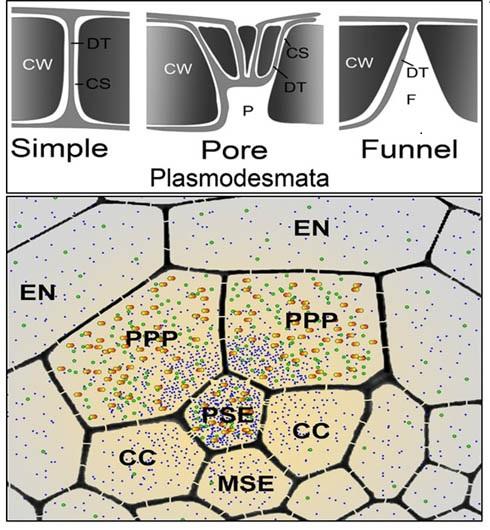
Phloem is celebrated for its role in moving the products of photosynthesis from ‘source’ tissues, e.g. leaves, through the plant body-plan to ‘sink’ tissues, e.g. roots. Despite this central role in plant physiology, the photosynthate delivery interface between the phloem and the surrounding sink tissues is not well characterised. Recently, a collaborative effort spearheaded by the Knoblauch [Washington State University] and Oparka [University of Edinburgh] labs and involving the Helariutta lab [SLCU] shed light on this interface. The team showed that a specific cell type, the phloem pole pericycle cells, which are adjacent to the long-distance transport cells of the phloem, have an important role in mediating the unloading of photosynthates in root tips. The unloading occurs through specialized cell-cell connections the authors dubbed "funnel plasmodesmata" that have a high capacity to deliver small molecules and proteins from the phloem long-distance transport cells to the phloem pole pericycle cells. A real surprise of this investigation was the compactness of the unloading zone in the phloem. Limited to only 5-10 long-distance transport cells, it seems that plants deliver to root tips the sugars and other compounds needed for growth through a very small gateway. The full work is published in the open access Journal eLife and is accessible here https://elifesciences.org/articles/24125.





